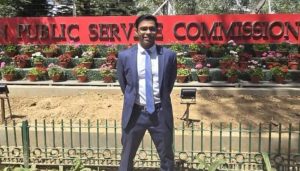Financial Experts Explain How To Save Money With Fifty Thirty Twenty Rule

New Delhi, 20th April 2025: Financial advisors across India are highlighting the effectiveness of the fifty thirty twenty rule as a practical approach to personal budgeting and savings. This method, which divides income into three categories—fifty percent for needs, thirty percent for wants, and twenty percent for savings or debt repayment—has gained popularity among working professionals and families aiming to manage their finances efficiently. With rising living costs and economic uncertainties, many are turning to this simple formula to ensure financial stability and future security.
The fifty thirty twenty rule was first popularized by American bankruptcy expert Elizabeth Warren. Under this method, individuals allocate fifty percent of their monthly income to essential expenses such as rent, groceries, and utilities. Thirty percent is set aside for discretionary spending, including dining out, entertainment, and hobbies. The remaining twenty percent is dedicated to savings, investments, or paying off debts. According to Delhi-based financial consultant Rakesh Sharma, “This rule provides a clear structure for people who struggle to balance spending and saving. It helps individuals prioritize necessities while still allowing room for enjoyment and future planning.”
Many urban families and young professionals have adopted this rule to avoid overspending and to build emergency funds. Mumbai resident Priya Nair, a 29-year-old IT professional, shared, “After following the fifty thirty twenty rule for a year, I have managed to save consistently and feel more in control of my finances.” Financial planners also recommend automating transfers to savings accounts and tracking expenses through budgeting apps to make the process easier and more effective.
Experts suggest that while the rule offers a strong foundation, it can be adjusted based on personal goals and circumstances. For example, those with higher incomes may choose to increase their savings percentage, while individuals with debt may prioritize repayments. Kolkata-based chartered accountant Anil Banerjee advises, “Flexibility is key. The rule is a guideline, not a strict mandate. People should adapt it according to their financial situation, especially when dealing with loans or planning for major life events.”
The Reserve Bank of India’s recent survey indicates that household savings rates have declined in the past year, making structured budgeting strategies like the fifty thirty twenty rule even more relevant. Financial literacy campaigns are being conducted in schools and workplaces to educate people about the importance of disciplined saving and smart spending.
In conclusion, the fifty thirty twenty rule is emerging as a reliable tool for individuals seeking to improve their financial health. By providing a straightforward framework, it empowers people to make informed decisions, avoid unnecessary debt, and achieve long-term financial goals. As more Indians embrace this budgeting technique, experts believe it will play a crucial role in fostering a culture of savings and responsible money management across the country.








